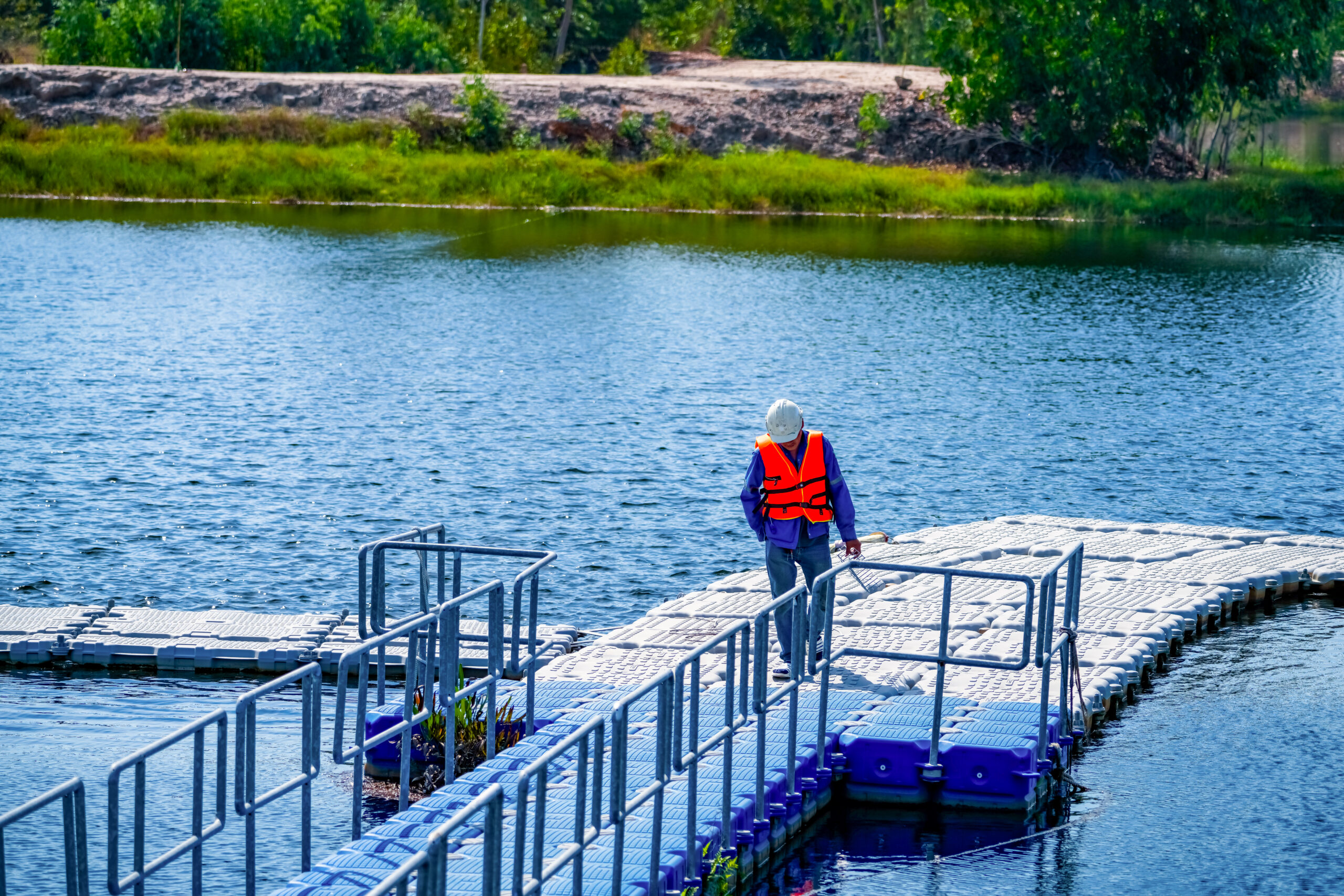What’s the secret to a boat that glides effortlessly through the water, free from costly repairs? It starts with cleaning boat lifts—a task often overlooked but vital for every boater. Marine growth like barnacles and algae doesn’t just cling to hulls; it can also bog down your boat lift, reducing its efficiency and lifespan. In this article, we’ll uncover why cleaning boat lifts matters, spotlight tools like New Wave Scrapers, and share expert tips to make it easy in 2025. Whether you’re battling rust or aiming for peak performance, you’ll find actionable advice to protect your investment. Let’s dive in!
What is Cleaning Boat Lifts and Why is it Important?
Cleaning boat lifts involves removing marine growth, debris, and corrosion from the lift structure that keeps your boat out of the water when not in use. This includes the cradle, cables, and pontoons—areas prone to algae, mussels, and saltwater damage. Tools like New Wave Scrapers, with their stainless steel blades and ergonomic grips, make tackling hull-adjacent growth a breeze.
Why bother? A 2023 study by the International Maritime Organization found that biofouling increases drag by up to 60%, impacting fuel efficiency. A dirty lift can also corrode, raising repair costs—averaging $500-$1,000 annually, per marine service reports. Regular boat lift care ensures smooth operation, protects your hull, and saves money long-term.
Key Benefits of Cleaning Boat Lifts
Here’s why cleaning boat lifts pays off:
- Boosts Lift Longevity: Removing corrosive saltwater and growth prevents rust, extending your lift’s life.
- Enhances Hull Maintenance: A clean lift supports a pristine hull, reducing drag and fuel costs.
- Improves Performance: Clear pontoon intakes ensure efficient lift operation—no delays or jams.
- Reduces Repair Costs: Proactive marine growth removal avoids pricey fixes to cables or frames.
- Eco-Friendly Bonus: Clean lifts minimize antifouling paint use, protecting local waterways.
These perks make cleaning boat lifts a smart move for any boat owner.
How to Use Cleaning Boat Lifts Effectively
Ready to master cleaning boat lifts? Follow these steps:
- Inspect the Lift: Check cables, bunks, and pontoons for algae, barnacles, or rust—focus on submerged areas.
- Gather Tools: Use New Wave Scrapers for tough growth, a soft brush for cables, and a hose for rinsing.
- Scrape Safely: With gloves on, chip away buildup using the scraper’s “web wedge” grip to reduce fatigue.
- Rinse Thoroughly: Blast away debris with freshwater—avoid high pressure near electrical parts.
- Dry and Protect: Wipe down metal surfaces and apply a rust inhibitor to keep corrosion at bay.
For more hull maintenance tips, visit our hull maintenance.
Best Practices for Cleaning Boat Lifts in 2025
Stay ahead with these modern strategies for cleaning boat lifts:
- Leverage Eco-Solutions: Use biodegradable cleaners to meet 2025 marine regulations and safeguard ecosystems.
- Schedule Smart: Clean monthly during boating season—more often in warm, growth-heavy waters.
- Incorporate Tech: Monitor lift condition with apps like BoatLift Buddy, trending in 2025 for maintenance tracking.
- Use Quality Tools: Opt for New Wave Scrapers—their safety yellow design shines underwater, boosting efficiency.
Google Trends shows a 20% uptick in “boat lift care” searches in early 2025, reflecting growing awareness of this essential task.
Common Mistakes to Avoid When Cleaning Boat Lifts
Don’t sabotage your efforts—steer clear of these pitfalls:
- Skipping Regular Checks: Waiting too long lets growth harden, making marine growth removal tougher.
- Using Harsh Chemicals: Toxic cleaners harm waterways and lift components—stick to eco-friendly options.
- Overlooking Cables: Dirty or frayed cables can snap—inspect and clean them every time.
- Neglecting Drying: Wet metal invites rust—always dry thoroughly after rinsing.
Avoid these errors to keep your lift in peak condition and your boat ready to roll.
FAQs About Cleaning Boat Lifts
Here are answers to common questions, optimized for FAQ schema:
What does cleaning boat lifts mean?
Cleaning boat lifts involves removing marine growth, debris, and corrosion from the lift’s structure to ensure functionality and protect your boat.
How often should I clean my boat lift?
Clean every 4-6 weeks during active use, or monthly in warm climates, to prevent buildup and maintain boat lift care.
Can I use New Wave Scrapers for boat lift cleaning?
Yes! Their stainless steel blades and ergonomic grip excel at marine growth removal from lifts and hulls alike.
Does cleaning boat lifts save money?
Absolutely—preventing corrosion and damage cuts repair costs, often saving hundreds annually.
Is it safe to clean a boat lift myself?
Yes, with proper tools and precautions (gloves, no harsh chemicals). For complex lifts, consider a pro.
Conclusion: Make Cleaning Boat Lifts a Priority Today
Cleaning boat lifts isn’t just maintenance—it’s a game-changer for your boating experience. A clean lift means a longer-lasting system, a healthier hull, and lower costs, all while supporting eco-friendly boating in 2025. With tools like New Wave Scrapers and our expert tips, you’re equipped to tackle this task with confidence. Don’t let neglect sink your investment—start cleaning boat lifts today and enjoy smoother sails tomorrow. For more insights, explore our hull maintenance.
